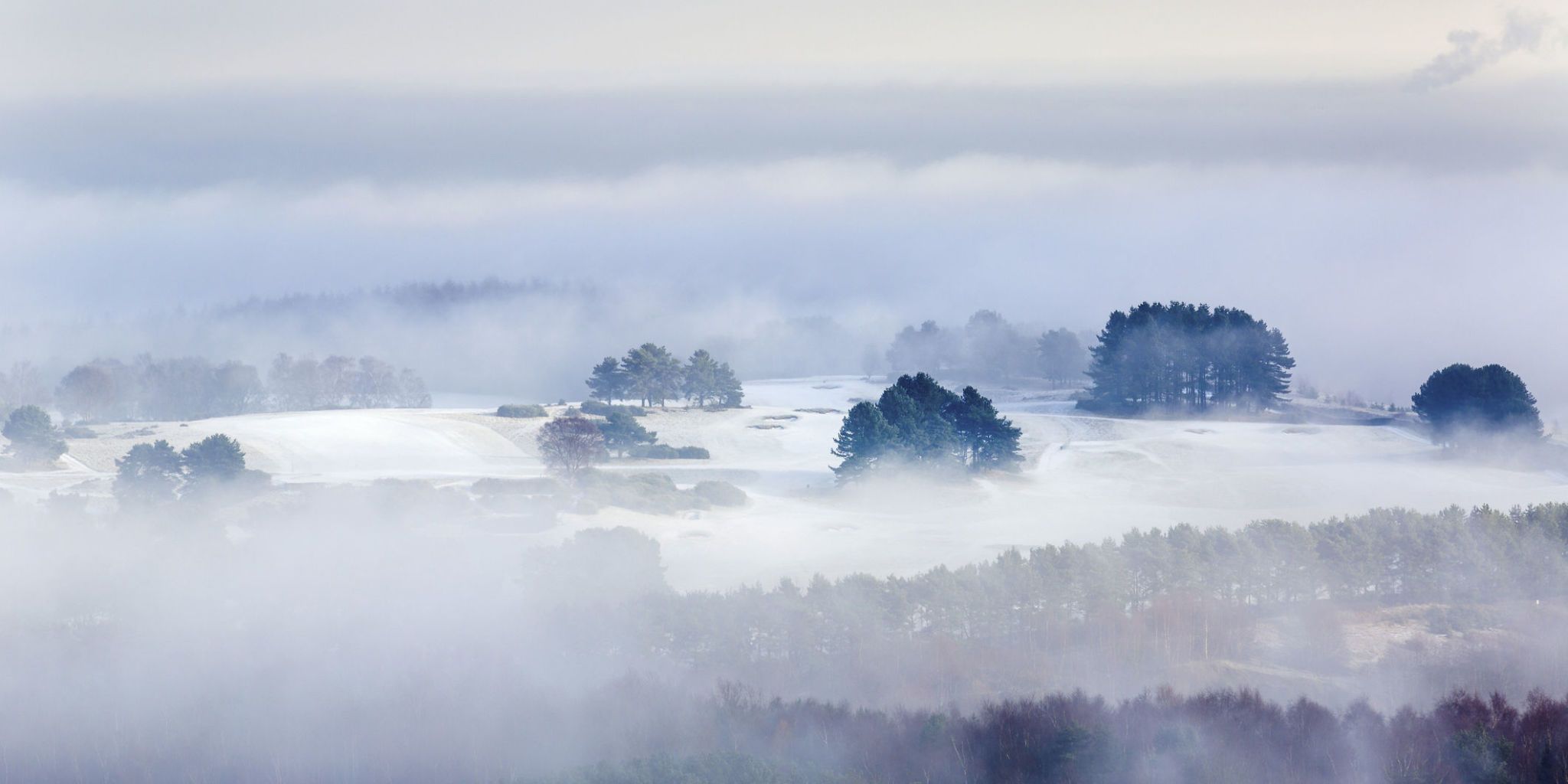

Fog is produced by suspension of very fine droplets in the air, so the amount of scattering is even larger and there is more loss of contrast and more backscatter from headlights. Smaller droplets cause more scatter and especially more backscatter. As droplet size decreases, however, both the type and mount of scattering change. The physical cause is the same as the scattering effect in rain - light hits moisture droplets and scatters. Fog lowers contrast substantially,Ĭausing objects to become fainter and less distinct. We see objects, not based on their absoluteīrightness or darkness, but on their difference between the objectīrightness and background. However, foggyĬonditions also promote accidents because they affect perceptual
#FOG WEATHER DRIVER#
Fog obviously producesĪccidents because a driver cannot see as far ahead. Most people have heard of the horrific chain Pedestrians in dark clothes would become even darker and could be more difficult to see. Less illumination falling on the object is reflected back, so the objects appear darker and have lower contrast. Lastly, water reduces the reflectivity of most materials. The mirror-finish of the road also causes light from any other source, streetlamps, business signs or headlights of other cars, to be more likely to shine in the driver's eyes and cause glare. The road appears darker and therefore it becomes harder to see pedestrians who are wearing dark clothes - their contrast is lower. The headlight beams then strike the road and instead of reflecting back, reflects forward. Rainwater fills in the rough irregularities and creates a smooth mirror-like finish on the road. A normal road has a rough surface, which causes some of the head light beam to reflect back to the driver's eye. The same effect makes the road appear darker. As a result, the lines become almost invisible to the driver. However, water acts like a lens which disperses the lights, so that much of it is reflected in different directions. In dry conditions, headlight illumination bounces off the reflective paint back to the driver's eyes. The paint used in making road markings has a reflectorized material. Rain makes road delineations, such as crosswalks, less visible. Rain also affects visibility by changing the amount of light reflected from the road back to the driver's eye. Lastly, wipers only sweep part of the visual field clean of rain. Wipers are never 100% efficient and typically leave a smear of water across the windshield. The clutter and movement caused by the raindrops falling on the windshield further draw attention and mask objects on the road. The rain acts like a lens which scatters lights and distorts the visual scene image. Even with windshield wipers operating, the splashing of rain periodically blocks vision. Rain affects ability to see through the car windshield. Peripheral field, so that, for example, it would be harder to seeĪ car or pedestrian approaching from the side. This decreases the probability of seeing with the Glare can impair vision for all drivers, but is especially bad for older people.Ĭoncentrate their attention directly ahead in order to see where Glare creates visual discomfort and lowers the ability to see contrast. Backscatter also creates glare, which is defined as light much brighter than the driver's level of dark adaptation. The rain then blocks light coming back from objects in the road while simultaneously lowering their contrast by the veiling effects of backscatter. The backscatter acts as a veil and reduces contrast of everything in the field of view. Some of the headlamp light becomes "backscatter," light reflected back by rain to the driver's eye.The rain therefore blocks some of the light reflected by objects and less reaches the driver's eye. When light strikes the raindrops, only a portion passes through while the rest scatters.Lighting effectiveness may be further lowered by the film of dirty water which passing cars splash on to the headlamps. Rain makes headlamps and other light sources less effective by filtering away some of their light output and reducing illumination on the road ahead.Rain interferes with this process in several ways. We normally see an object when light from a source, the sun, streetlamps, our headlights, reflects from the object back to the eye. It both directly affects perception (seeing through rain) but also produces visibility changes through its action on headlamps, windshields, the road itself and road markings. Rain reduces driver perception in several ways and is especially debilitating at night.


 0 kommentar(er)
0 kommentar(er)
